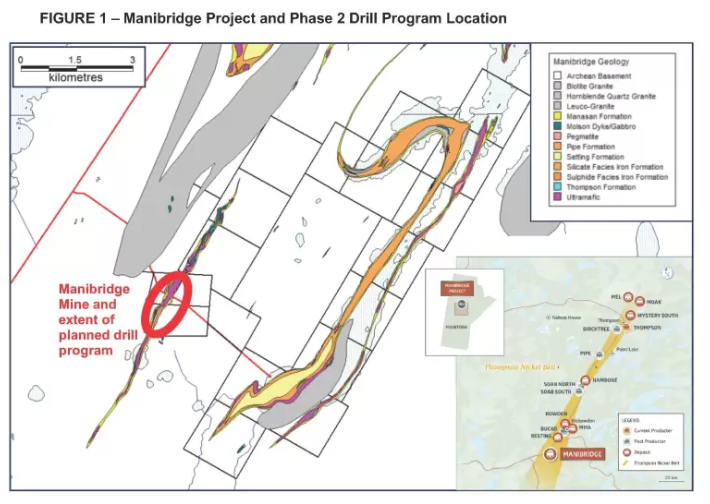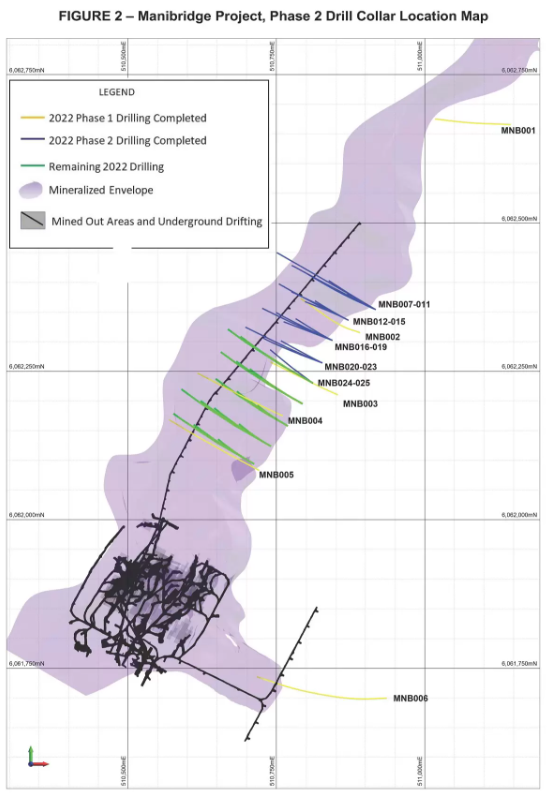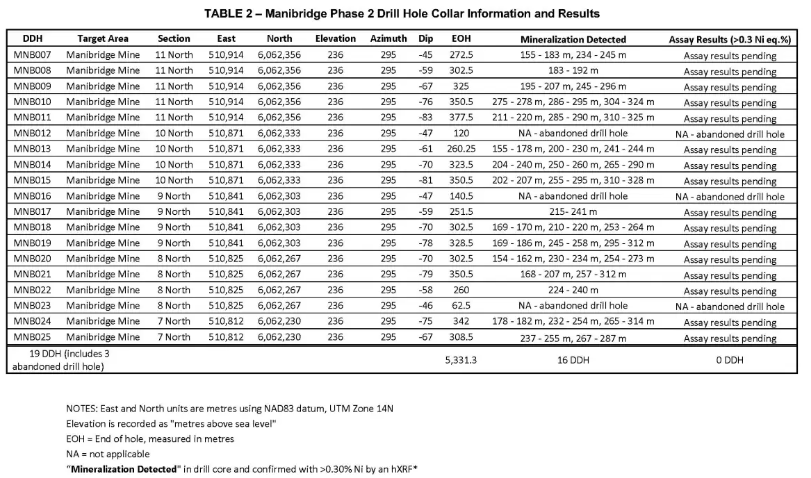Metal Energy Corp. (TSXV:MERG) has provided an update on its high-grade nickel and copper-cobalt Manibridge project in the Thompson Nickel Belt, Manitoba. Currently, drilling is focused in the shadow of the past-producing mine that from 1971 to 1977 produce 1.3 million tonnes at 2.55% nickel and 0.27% copper.
The Manibridge project is 4,368 hectares within the world-class Thompson Nickel Belt. Located approximately 20 kilometres southwest Wabowden, the location grants it infrastructure and capacity that has supported other drill programs. Metal Energy is a nickel and battery metal exploration company. The company is well-funded, and currently has two main projects, Manibridge and Strange, located in the stable mining jurisdictions of Manitoba and Ontario, Canada, respectively. The company has earn-in agreements at both properties allowing it to acquire 100% exploration rights to approximately 16,200 hectares.
James Sykes, CEO of Metal Energy, commented in a press release: “We completed a total of 5,331 m in nineteen drill holes (MNB007 to MNB025) between June 6 and July 28. Sixteen drill holes intersected the bedrock, each intersecting nickel-copper-cobalt sulphide mineralization over significant widths. These visual observations were confirmed with a handheld XRF*. Combined with the six drill holes from the winter program, we have a 100% nickel sulphide intersection success rate in all of our completed drill holes at Manibridge. We’ve drilled wide- and tight-spaced drill holes across a kilometre strike length and as deep as 700 m; every drill hole continues to intersect Ni-Cu-Co sulphides. Our recent Option Agreements with Mistango River Resource Inc. provides us with a unique opportunity to continue the Program with minimal dilution, greater insider ownership aligning with shareholders, and preserving capital. We are excited to renew our Phase 2 drill program, and complete the remaining 4,669 m as we progress southwest along this fertile corridor towards the old mine workings.”
Highlights from the update are as follows:
Manibridge Phase 2 Drill Program Summary

The Program is planned for 10,000 metres of diamond drilling in approximately 33 drill holes. A total of 5,331 m were completed in 19 drill holes (MNB007 to MNB025) between June 6 and July 28 (Table 1). The drill hole collar locations were within 300 to 600 metres of the old mine workings. The remaining drill holes will progress between 150 to 300 metres of the old mine workings. The average drill hole depths remain planned for between 225 and 400 metres. All drill holes will be inclined between -45 and -85. Figure 1 is a location map of the drill program within the Manibridge project. Figure 2 shows the drill hole locations with respect to the historic Manibridge Mine.
All sixteen drill holes that successfully intersected the bedrock also intersected Ni-Cu-Co sulphide mineralization, confirmed with a handheld XRF*. Drill core observations and XRF results confirm sulphide-rich lithostratigraphy ranges from 1 m thick (MNB018) to 55 m thick (MNB021), with an average thickness exceeding 15 m. Fourteen drill holes intersected two or more zones of Ni-Cu-Co sulphides. All drill holes had evidence of Ni-Cu-Co sulphides occurring as either disseminations within the mafic to ultramafic host rocks, remobilized in foliations and shears, vein-hosted, and/or net-textured or brecciated.
Geochemical assays will be released as they become available from the lab and reviewed for QA/QC by the Company’s Technical team.

Metal Energy is the operator of the Program, holds 70% of the Project, and is currently earning towards 100% ownership of Manibridge, which is expected to be earned by the end of 2022. CanAlaska Uranium Ltd. currently holds the remaining 30% of the Project.
| *Handheld XRF (“hXRF”) results do not replace traditional laboratory-based analysis, however the results do provide an effective screening tool for the determination of nickel-copper-cobalt sulphides for selecting samples for geochemical assay analysis. hXRF analyses were taken on every 10 cm to 50 cm of the surface of the core as spot analyses with a 1 cm view window wherever visible sulphides and/or ultramafic rock types were present. The hXRF model used was a Niton XL5 and operated by Metal Energy Corp. The reader is cautioned that these width results might not reflect laboratory-quality width results and therefore should only be viewed as an initial screening for the presence of nickel-copper-cobalt sulphides within the drill core.
Table 1 – Selected Historic and Recent Drill Intersections on Manibridge
Notes to Table 1:
|




 Follow us on Twitter
Follow us on Twitter Become our facebook fan
Become our facebook fan












Comments are closed.